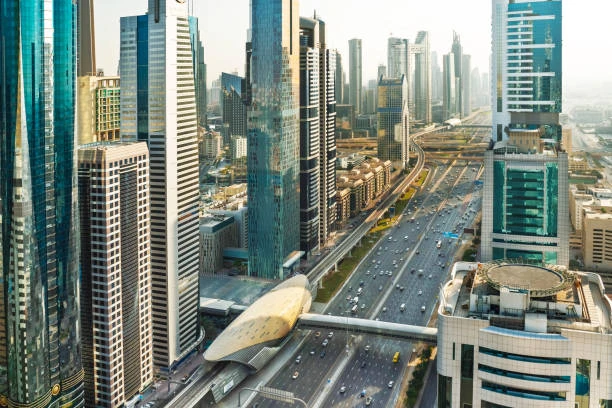UAE Becomes World’s Second-Largest Builder of Supertall Skyscrapers

According to the latest global rankings released by the Council on Tall Buildings and Urban Habitat (CTBUH), the United Arab Emirates has overtaken the United States, securing the second spot globally for the number of supertall skyscrapers—defined as those exceeding 300 meters in height.
This architectural milestone not only reinforces the UAE’s standing on the international skyline but also tells a broader story of urban ambition, national pride, and a bold reimagination of modern cityscapes.
Today, the UAE boasts over 30 completed supertall structures, most of which have risen over the past decade. From the iconic Burj Khalifa in Dubai to the sleek Adnoc Headquarters in Abu Dhabi, this vertical momentum represents a clear vision rather than a mere race for height.
As noted by the CTBUH, the UAE has emerged as a world leader in combining advanced engineering with cutting-edge architecture to build towers that are not only taller—but also smarter, greener, and more resilient.
At the heart of this vertical transformation is Dubai, now ranked fourth globally for cities with the most buildings over 150 meters tall. With more than 250 towers surpassing that height, Dubai presents a dynamic blend of innovation and elegance. Anchored by the 828-meter-tall Burj Khalifa, its skyline is a living representation of real estate ambition, tourism appeal, and economic diversification.
Dubai’s rise has been both swift and strategic. What was once a modest Gulf town has evolved into a glamorous global city, competing with the likes of New York, Shenzhen, and Hong Kong. This transformation has been driven by a deliberate effort to move beyond oil dependency and position the emirate as a hub for business, innovation, and luxury living. Here, skyscrapers serve as powerful symbols of economic aspiration, global relevance, and national identity.
Areas such as Sheikh Zayed Road, Dubai Marina, and Downtown Dubai are packed with high-rise marvels—each new addition redefining architectural boundaries. The city’s skyline forms a vertical collage that reflects a fusion of cultural diversity, technological innovation, and economic strength, featuring everything from luxurious residential towers to multi-purpose landmarks.
The UAE’s achievement as the second-largest builder of supertall skyscrapers marks a pivotal moment in global construction trends. Once dominated by the U.S.—the historical birthplace of the skyscraper—this new reality highlights how Middle Eastern cities are now reshaping conversations around urban livability, design, and growth.
According to CTBUH data, the UAE is home to over 200 buildings taller than 150 meters, and more than 30 of them exceed 300 meters. These structures do more than shape skylines—they’ve become beacons of international attention, attracting investment, tourism, and global acclaim. Towers like Marina 101, Emirates Towers, and Capital Gate have achieved iconic status beyond the region.
This vertical expansion isn't limited to Dubai. Cities like Abu Dhabi and Sharjah are also contributing to the UAE's architectural evolution. In Abu Dhabi, new government, commercial, and residential towers emphasize sustainability and aesthetic integrity. Meanwhile, Sharjah is witnessing the rise of a new generation of high-rises that offer a blend of affordability and modern urban lifestyle.
Industry experts argue that these towering landmarks are not just feats of engineering but also cultural statements—representing the UAE’s openness to global talent, capital, and innovation. Drawing millions of visitors, investors, and entrepreneurs each year, these structures stand as lasting testaments to the UAE’s journey from desert outposts to global metropolises.

